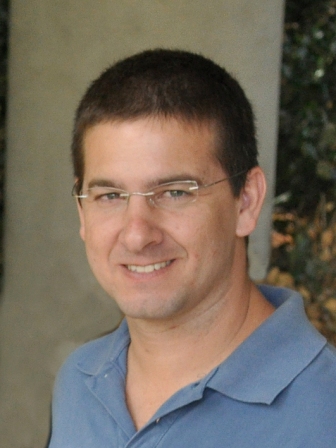Microprocessors – at least in the cell – are complexes that chop active, non-protein-coding strands called microRNAs (miRNA) out of longer, inactive precursor miRNA strands. These functional miRNAs regulate protein production by inhibiting the capacity of the RNAs that do code for proteins.
Dr. Eran Hornstein,
Prof. Naama Barkai and former Ph.D. students Drs. Omer Barad and Mati Mann of the Molecular Genetics Department asked how the Microprocessor complex manages to cut the right precursor miRNA strands and avoid cutting other forms of RNA that may present similar structures to those targeted by the chopping machinery. In
research that appeared in
Nature Structural and Molecular Biology, they used both mathematical modeling and experiments in cells to show how the Microprocessor machinery balances the interplay between efficiency and specificity in the production of miRNAs.
“On the one hand, it should not be overly specific, as this may come at the cost of also cleaving unwanted nonspecific RNA substrates. On the other hand, it should not be too ‘picky’ because of the risk that this will result in insufficient efficiency at processing genuine miRNAs,” says Hornstein.
They predicted that the balance between efficiency and specificity would be maintained via a feedback loop in which the Microprocessor detects the amount of precursor miRNA available in the cell and alters its own production accordingly. After checking in mouse and human tissue, they found that the Microprocessor is indeed attuned to levels of precursor miRNA, upping its own production if the cell is inundated with precursor miRNA, or halting production in response to a decrease in the flow of precursors.
Since small RNAs are produced synthetically as possible new therapies for a number of diseases, this research may direct efforts toward efficiently producing such therapies in the future. In addition, many other biological systems need to balance efficiency with specificity, and the team’s findings suggest that many may do so in a similar way.
Prof. Naama Barkai’s research is supported by the Azrieli Institute for Systems Biology, which she heads; the Helen and Martin Kimmel Award for Innovative Investigation; the Jeanne and Joseph Nissim Foundation for Life Sciences Research; Lorna Greenberg Scherzer, Canada; the Carolito Stiftung; the European Research Council; the estate of Hilda Jacoby-Schaerf; and the estate of John Hunter. Prof. Barkai is the incumbent of the Lorna Greenberg Scherzer Professorial Chair.
Dr. Eran Hornstein’s research is supported by Dr. Sidney Brenner and Friends; the Carolito Stiftung; the Nella and Leon Benoziyo Center for Neurological Diseases; the Y. Leon Benoziyo Institute for Molecular Medicine; the Nathan, Shirley, Philip and Charlene Vener New Scientist Fund; the estate of Fannie Sherr; the estate of Lola Asseof; Maria Halphen, France; the Julius and Ray Charlestein Foundation; the Legacy Heritage Fund; the Kekst Family Institute for Medical Genetics; the David and Fela Shapell Family Center for Genetic Disorders Research; the Helen and Martin Kimmel Institute for Stem Cell Research; the Crown Human Genome Center; the Celia Benattar Memorial Fund for Juvenile Diabetes; the Fraida Foundation; and the Wolfson Family Charitable Trust. Dr. Hornstein is the incumbent of the Helen and Milton A. Kimmelman Career Development Chair.

